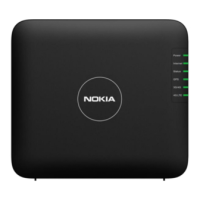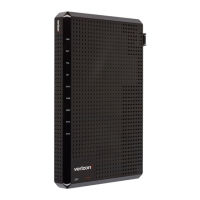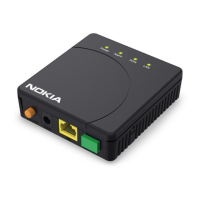ANSI CPE safety guidelines
Safety standards compliance
• Connect the equipment into an outlet on a circuit different from that to which the receiver is
needed.
• Consult the dealer or an experienced radio/TV technician for help.
4.3.2 Energy-related products standby and off modes compliance
Hereby, Nokia declares that the Beacon G6 devices are in compliance with the essential
requirements and other relevant provisions of Directive 2009/125/EC together with Commission
Regulation (EC) No 1275/2008 and Commission Regulation (EC) No 801/2013.
The Beacon G6 devices qualify as high network availability (HiNA) equipment. Since the main
purpose of Beacon G6 devices is to provide network functionality with HiNA 7 days/24 hours, the
modes Off/Standby, Power Management, and Networked Standby are inappropriate.
For information about the type and number of network ports, see in chapter Chapter 5, “Beacon G6
unit data sheet”
For information about power consumption, see 5.7 “Beacon G6 detailed specifications” (p. 46)
4.3.3 FCC statement
This equipment has been tested and found to comply with the limits for a Class B digital device,
pursuant to part 15 of the FCC Rules. These limits are designed to provide reasonable protection
against harmful interference in a residential installation. This equipment generates, uses and can
radiate radio frequency energy and, if not installed and used in accordance with the instructions,
may cause harmful interference to radio communications. However, there is no guarantee that
interference will not occur in a particular installation. If this equipment does cause harmful
interference to radio or television reception, which can be determined by turning the equipment off
and on, the user is encouraged to try to correct the interference by one or more of the following
measures:
• Reorient or relocate the receiving antenna.
• Increase the separation between the equipment and receiver.
• Connect the equipment into an outlet on a circuit different from that to which the receiver is
connected.
• Consult the dealer or an experienced radio/TV technician for help.
4.3.4 FCC Radiation Exposure Statement
This device complies with FCC radiation exposure limits set forth for an uncontrolled environment
and it also complies with Part 15 of the FCC RF Rules. This equipment must be installed and
operated in accordance with provided instructions and the antenna(s) used for this transmitter must
be installed to provide a separation distance of at least 20 cm from all persons and must not be co-
located or operating in conjunction with any other antenna or transmitter. End-users and installers
must be provided with antenna installation instructions and consider removing the no-collocation
statement.
This device complies with Part 15 of the FCC Rules. Operation is subject to the following two
conditions:
1. This device may not cause harmful interference, and
Use subject to agreed restrictions on disclosure and use.
34 3FE-49949-AAAA-TCZZA
